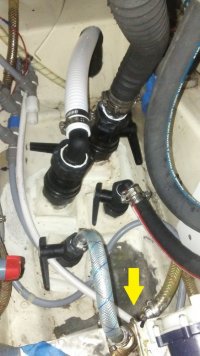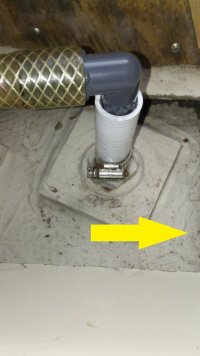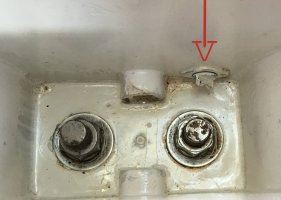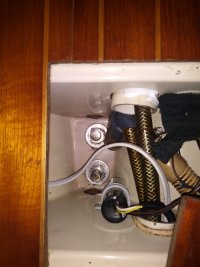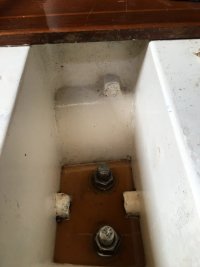We're talking about very little mystery water. Maybe half a cup. But that spreads through two E381 bilge compartments a quarter-inch deep, and where's it come from? [The TAFG, "Tri-Axial Force Grid," is what Ericson calls the hull-stiffening structure introduced in 1980s boats.]
And are we sinking?
It's salt water. Yeah, I've been tasting bilges for 70 years. Not a goblet full, just tip of finger. Rain water isn't salty like that.
Today I found the source, perhaps exclusive to the E381, maybe not.
It is spray from my dripless shaft seal, after two hours motoring. The DSS probably had a bit of goop between the plates, which I just burped. I have a new DSS on order anyhow, to be installed during the haulout scheduled for March. I knew it was time.
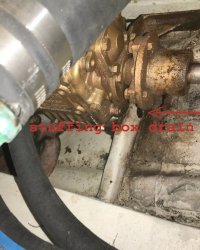
Where does it exit in the bilge, which is 10 feet away?
[This post edited by me to remove incorrect information. See posts below.]
Well, on my boat it comes out a hole high on the TAFG wall. Of course it doesn't come out until the water level has risen a couple of inches, and then it just sorta oozes out when it fills up enough, just to make you crazy.
So, now I know the source of the half-cup of water sometimes in the bilge after motoring.
The TAFG is a great feature but does make for puzzling drainage issues.
And are we sinking?
It's salt water. Yeah, I've been tasting bilges for 70 years. Not a goblet full, just tip of finger. Rain water isn't salty like that.
Today I found the source, perhaps exclusive to the E381, maybe not.
It is spray from my dripless shaft seal, after two hours motoring. The DSS probably had a bit of goop between the plates, which I just burped. I have a new DSS on order anyhow, to be installed during the haulout scheduled for March. I knew it was time.

Where does it exit in the bilge, which is 10 feet away?
[This post edited by me to remove incorrect information. See posts below.]
Well, on my boat it comes out a hole high on the TAFG wall. Of course it doesn't come out until the water level has risen a couple of inches, and then it just sorta oozes out when it fills up enough, just to make you crazy.
So, now I know the source of the half-cup of water sometimes in the bilge after motoring.
The TAFG is a great feature but does make for puzzling drainage issues.
Last edited:

